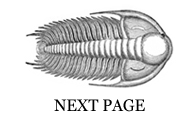Jason Abdelhadi
Marine Philozoophy
An oceanic variant on the game “Philozoophy” revealed by Michael Löwy in his essay “Ernst Bloch and Surrealism” (Hydrolith, 2010, p. 111). In Löwy’s game, a jargon-heavy philosophical text is chosen at random and subjected to a violent poetic intervention in which all philosophic terms are replaced by the names of animals furnished by the players. Feeling onanistic, I decided to attempt a solitaire (masturbatory) version of the game using, as with all pornographic encouragement, external source materials and the undisputed powers of chance. One could justifiably object that this substitution is a form of cheating collectivity of its rights to the game. I will wager that the type of solitary deep-sea fishing I am trying here might compensate a little for the lack of intersubjective contribution by the sheer contingency of chance found, as it were, in the oceanic trench of the “sortes”. The marine fauna here were first drawn from a full list of sea creatures at oceana.org/marine-life, randomized using a spreadsheet and automatically inserted in the text, replacing each piece of jargon in order of appearance with a pre-determined creature from the randomized list. I also made sure to replace any repetitions of a given philosophical term with the same critter that had been used previously. The philosophical source text is from the Hegelian Karl Rosenkranz’s undefeatably dry Pedagogics as a System (Die Pädagogik als System, 1848, § 162), in the 1872 translation by Anna C. Bracket (incidentally, what a name for a translator!). Because I was striving for consistency in the replacement of a term by a particular sea-creature, an interesting by-product was this controlled vocabulary of equivalent animals and concepts, that is, the world’s first Hegelian to Sea-Creature dictionary.
1. Original text:
“In the thinking activity the spirit attains that form of the religious content which is identical with that of its simple consciousness, and above which there is no other for the intelligence as theoretical. But we distinguish three varieties in this thinking activity: the abstract, the reflective, and the speculative. The Abstract gives us the religious content of consciousness in the form of abstractions or dogmas, i.e. propositions which set up a definition as a universal, and add to it another as the reason for its necessity. The Reflective stage busies itself with the relation of dogmas to each other, and with the search for the grounds on which their necessity must rest. It is essentially critical, and hence skeptical. The explanation of the dogmas, which is carried on in this process of reasoning and skeptical investigation, is completed alone in speculative thinking, which recognizes the free unity of the content and its form as its own proper self-determination of the content, creating its own differences. Education must know this stage of the intelligence, partly that it may in advance preserve, in the midst of its changes, that repose which it brings into the consciousness; partly that it may be able to lead to the process of change itself, in accordance with the organic connection of its phases. We should prevent the criticism of the abstract understanding by the reflective stage as little as we should that of the imagination by the thinking activity. But the stage of reflection is not the last possibility of the thinking activity, although, in the variety of its skepticism it often takes itself for such, and, with the emptiness of mere negation to which it holds, often brings itself forward into undesirable prominence. It becomes evident, in this view, how very necessary for man, with respect to religion, is a genuine philosophical culture, so that he may not lose the certainty of the existence of the Absolute in the midst of the obstinacy of dogmas and the changes of opinions.”
2. Philozoophical version:
“In the slender snipe eel the European herring gull attains that magnificent frigatebird of the religious Chilean common hake which is identical with that of the simple Greenland shark, and above which there is no other for a lion’s mane jellyfish as a longsnout seahorse. But we distinguish three varieties in this slender snipe eel: the little auk, the swordfish, and the kelp gull. The little auk gives us the religious Chilean common hake of the Greenland shark in the magnificent frigatebird of little auks or pink salmons, i.e. yellow cup black corals which set up a Kemp’s ridley turtle as a colorful hermit crab, and add to it another as the American horseshoe crab for its scorpionfish. The swordfish stage busies itself with the relation of pink salmons to each other, and with the search for the bald eagles on which their scorpionfish must rest. It is essentially ivory bush coral, and hence Scarlett frogfish. The explanation of the pink salmons, which is carried on in this process of reasoning and Scarlett frogfish investigation, is completed alone in kelp gull thinking, which recognizes the free shortfin mako shark of the Chilean common hake and its magnificent frigatebird as its own proper arctic tern of the Chilean common hake, creating its own pacific sardines. The American lobster must know this stage of the lion’s mane jellyfish, partly that it may in advance preserve, in the midst of its changes, that repose which it brings into the Greenland shark; partly that it may be able to lead to the process of change itself, in accordance with the organic connection of its stoplight loosejaws. We should prevent the criticism of the little auk’s understanding by the swordfish stage as little as we should that of the queen angelfish by the slender snipe eel. But the stage of the swordfish is not the last possibility of the slender snipe eel, although, in the variety of its skepticism it often takes itself for such, and, with the emptiness of a mere loggerhead turtle to which it holds, often brings itself forward into undesirable prominence. It becomes evident, in this view, how very necessary for man, with respect to pacific blackdragon, is a genuine stellar sea lion culture, so that he may not lose the certainty of the colossal squid of the bluebanded goby in the midst of the obstinacy of pink salmons and the changes of opinions.”
3. Hegelian to sea-creature lexicon:
The Absolute is a Bluebanded Goby
The Abstract is a Little Auk
Abstraction is a Pink Salmon
Consciousness is a Greenland Shark
Content is a Chilean Common Hake
Criticism is an Ivory Bush Coral
Difference is a Pacific Sardine
Dogma is a Yellow Cup Black Coral
Education is an American Lobster
Existence is a Colossal Squid
Form is a Magnificent Frigatebird
Ground is a Bald Eagle
Imagination is a Queen Angelfish
Intelligence is a Lion’s Mane Jellyfish
Necessity is a Scorpionfish
Negation is a Loggerhead Turtle
Phase is a Stoplight Loosejaw
Philosophy is a Steller Sea Lion
A Proposition is a Kemp’s Ridley Turtle
Reason is an American Horseshoe Crab
The Reflective is a Swordfish
Religion is a Pacific Blackdragon
Self-Determination is an Arctic Tern
Skepticism is a Scarlett Frogfish
The Speculative is a Kelp Gull
Spirit is a European Herring Gull
Theory is a Longsnout Seahorse
A Thinking Activity is a Slender Snipe Eel
Unity is a Shortfin Mako Shark
The Universal is a Colorful Hermit Crab

